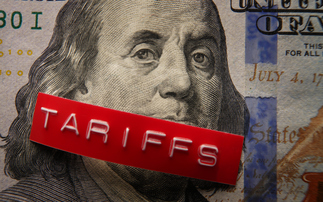The UK's GDP growth forecast for 2017-18 has been revised downwards by the Office for Budget Responsibility (OBR) in today's Autumn Statement, with Brexit-related uncertainty expected to cost the country 2.4 percentage points in growth over the next few years.
In his first Autumn Statement since being appointed as Chancellor in July, Philip Hammond (pictured) revealed economic growth in 2016 is expected to reach 2.1%, higher than previous forecasts of 2%.
However, he said the OBR's forecast for 2017 has dropped significantly, from 2.2% made at the time of the March Budget to 1.4%. It is also set to fall to 1.7% in 2018, down from 2.1%. However, it will return back to previous forecasts of 2.1% in 2019 and 2020, and 2% in 2021.
"While the OBR is clear that it cannot predict the deal the UK will strike with the EU, its current view is that the referendum decision means that potential growth over the forecast period is 2.4 percentage points lower than would otherwise have been the case," the Chancellor said.
However, he added: "We are prepared to be resilient as we exit the EU. We maintain a committment to fiscal discipline and recognise the need for further investment to drive productivity."
Budget 2016: Chancellor warns of 'dangerous cocktail of risk' as UK growth revised down
Turning to the budget deficit, the Chancellor said borrowing is expected to stand at £68.2bn at the end of the 2016-17 fiscal year, £59bn in 2017-18, £46.5bn in 2018-19 and £21.9bn in 2019-20, dropping to £17.2bn by 2021-22.
This means the UK's Brexit black hole is at least £122bn, more than the £100bn previously forecast by the City, according to The Guardian.
Hammond has already axed the deficit targets set by his predecessor George Osborne, which aimed to achieve a surplus by 2020.
In the Statement, he also set up three new fiscal rules. Firstly, the government must get the budget to a surplus in the next parliament, and borrowing down to 2% by the end of this parliament.
Secondly, the government must get net debt falling by the end of this parliament; and lastly, it must keep welfare spending below a limit, set by the government and monitored by the OBR.
In the near-term, national debt is forecast to rise from 84.2% to 87.3% of GDP this year, peaking at 90.2% in 2017-18, as BoE monetary policy interventions come to an end.
After that, this is set to fall to 89.7% in 2018-19, marking the first fall since 2001-02, and is forecast to continue falling thereafter. Stripping out the effects of the Bank's interventions, the Chancellor said the underling debt will be 84% this year, falling to 77.7% by 2021-22.














